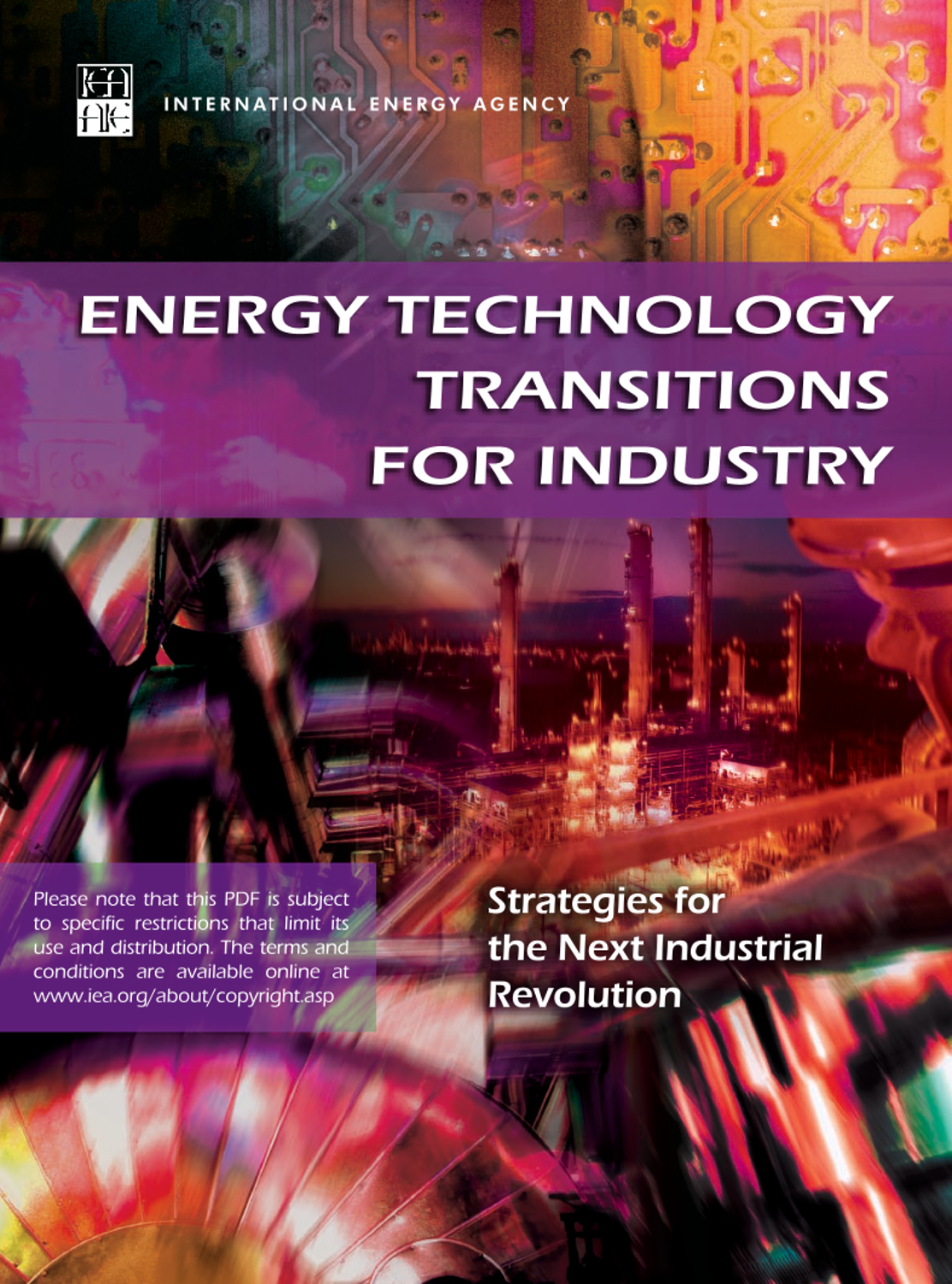
OECD보고서
Energy Technology Transtitions for Industry: stratefies for the next industrial revolution
- 저자
- OECD/IEA
- 발행사항
- Paris : OECD/IEA, 2009
- 형태사항
- 321p. ; 27cm
소장정보
| 위치 | 등록번호 | 청구기호 / 출력 | 상태 | 반납예정일 |
|---|---|---|---|---|
이용 가능 (1) | ||||
| 자료실 | E203726 | 대출가능 | - | |
이용 가능 (1)
- 등록번호
- E203726
- 상태/반납예정일
- 대출가능
- -
- 위치/청구기호(출력)
- 자료실
책 소개
Industry accounts for one-third of global energy use and almost 40% of worldwide CO2 emissions. Achieving substantial emissions reduction in the future will require urgent action from industry. What are the likely future trends in energy use and CO2 emissions from industry? What impact could the application of best available technologies have on these trends? Which new technologies are needed if these sectors are to fully play their role in a more secure and sustainable energy future? Energy Technology Transitions for Industry addresses these questions through detailed sectoral and regional analyses, building on the insights of crucial IEA findings, such as Energy Technology Perspectives 2008: Scenarios and Strategies to 2050. It contains new indicators and methodologies as well as scenario results for the following sectors: iron and steel, cement, chemicals, pulp and paper and aluminium sectors. The report discusses the prospects for new low-carbon technol
목차
Table of contents:
Foreword
Acknowledgements
Executive Summary
Chapter 1. Industry Overview
- Introduction
- Energy and CO2 savings potential with best available technologies
- Industry scenarios
- CO2 emissions in industry
- Regional implications
- Investment costs in industry
- RDD&D needs
- Policy Implications
Chapter 2. Iron and Steel
- Introduction
- Trends in energy efficiency and CO2 emissions
- Best available technology and technical savings potential
- R&D programmes
- Scenario analysis
- New technology options
--New coal-based processes
--Fuel switching
--Electricity-based steel-making
--CO2 capture and storage
-Material flows and material flow optimisation
- Conclusion: Transition pathway for the iron and steel sector
Chapter 3. Cement
- Introduction
- Cement production processes and technologies
- Trends in energy efficiency and CO2 emissions
- Best available technology and technical savings potential
- R&D programmes
- Scenario analysis
- New technology options
--CO2 capture and storage
--New low-carbon cement
- Conclusion: Transtion pathway for the cement sector
Chapter 4. Chemicals and Petrochemicals
- Introduction
- Trends in energy efficiency and CO2 emissions
- Best available technology and technical savings potential
- Scenario analysis
- New technology options
--New olefin production technologies
--Other catalytic processes with improvement potential
--Membranes and other separation technologies
--Future process intensification potentials
--Bio-based chemicals and plastics
--CO2 capture and storage in the chemcial and petrochemical sector
- Material flows and material flow optimisation
- Conclusion: Transition pathway for the chemical and petrochemical sector
Chapter 5. Pulp and Paper
- Introduction
- Pulp and paper processes
- Trends in energy efficiency and CO2 emissions
- Best available technology and technical savings potential
- Scenario analysis
- New technology options
--Black liquor gasification
--Lignin production from black liquor
--Biomass gasification with synfules production
--Biorefinery concepts
--CO2 capture and storage
--Paper drying technologies
- Material flows and demand analysis
- Conclusion: Transition pathway for the pulp and paper sector
Chapter 6. Aluminium
- Introduction
- Trends in energy efficiency and GHG emissions
- Best available technology and technical savings potential
- Scenario analysis
- New technology options
--Improvements to the Hall-Hérioult cell
--Alternative technologies
- Aluminium markets
- Conclusion: Transition pathway for the aluminium sector
Chapter 7. Cross-Cutting Options
- Introduction
- Biomass and biomass-waste use
- Systems optimisation
- Carbon capture and storage
- Recycling
- Municipal solid waste and by-products
- Reducing other GHG emissions
Chapter 8. Impacts on Materials Demand
- Introduction
- Power sector
- Transport sector
- Building sector
Chapter 9. Policy Implications
- Introcution
- Energy efficiency policies
- Ressearch, development and demonstration
- Emissions trading
- Sectoral approaches
- Conclusions
Annex A. Regional Detail of Industrial Analysis
Annex B. Energy and CO2 Indicators
Annex C. Definitions, Abbreviations, Acronyms and Units
Annex D. Refernces
